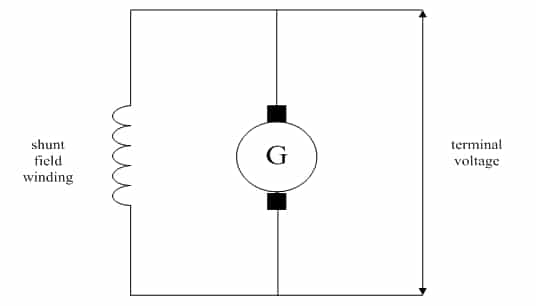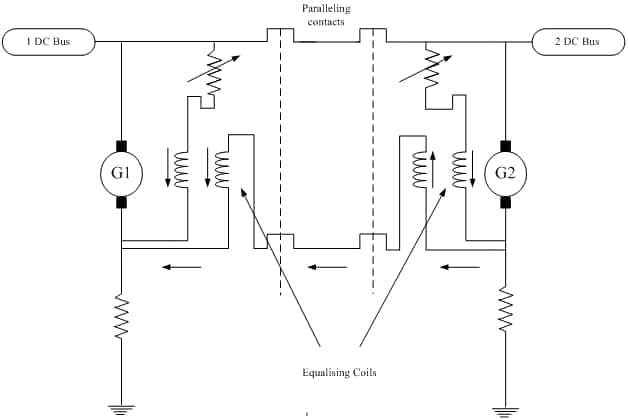
Do not hesitate to send questions or even articles just like him. The only thinkg to do is to contact us by mail.
But for now, let’s read Milan’s material!
On an aircraft we have two types of electrical current, DC and AC. Everything works prefect, we have enough power, but how can it be controlled? The key is control and regulation.
Let’s list primary elements of DC power system control:
- voltage regulation,
- parallel operation,
- protection functions
First of all, we should say something about DC generator and the principle of regulation…
DC generator and the principle of regulation
DC systems use generators to develop a DC voltage to supply aircraft system loads. Standard voltage is 28V DC and it is controlled at all times, so when regulations work we are sure that any tendencies for the voltage changes or fluctuation can be overcome.
The working principle is self-exciting, because the generator uses rotating electromagnets that generate the electrical power. The conversion to DC power is achieved by using commutator that enables the output voltage. In aircraft applications, the generators are typically shunt wound, the high-resistance field coils are connected in parallel with the armature, and this is shown in picture 1.

Principle of DC power generator
With these shunt type generators we have decreasing voltage with increasing of load current. However the desired characteristic is to control the output at constant voltage, nominally 28V DC. In this case, a voltage regulator is used to modify the field current and ensure voltage regulation while the aircraft engine speed and generator loads vary. The principle of regulation is shown in picture 2.

Picture 2. Regulation of DC power generator
The variable resistor is used to alter total resistance and therefore the current in the field winding. Key of regulation is to give required and automatic function that calculate the load and engine speed.
Also, that regulation has to be in accordance with the standard used to specify aircraft power systems. Standards specify the voltage at the point of regulations and acceptable voltage drops throughout distribution, protection and wiring.
The size of power in most case is 12kW and it is limited to 400A, and in most cases that is the standard for commercial and military aircrafts. This standard values are important for two main reasons:
- the size of conductors to carry the necessary current
- the brush consummation on DC generators
What can we do when we have more than two generators?
This could be the case when an aircraft has two engines and each engine has its own generator. In this case it is very important to have a no-break power system in case of engine or generator failure.
Aircraft instruments and navigation could be disturbed or restarted at any time due to power interruption. In this sense, generators are paralleled, and the key factor is equal proportion of electrical load between them. In individual cases generators are usually controlled by voltage regulators which directly compensate variations.
On the other hand, parallel generator operation needs to link the voltage regulations, and the result is that any unequal loading of the generators has to be corrected by corresponding alterations in the field current. In books this is mentioned as equalizing circuit.
Look at the picture below (picture 3.) and you will see the main elements of DC parallel distributions.

Picture 3. Parallel DC generator regulation
How is the generator protected?
Protection is required within these primary conditions:
- Firstly, it is of course reverse current.
When we have a defect, it is possible for current to flow in the reverse direction. This protection is usually achieved by using reverse circuit breakers or relays. The key is that these regulators have an effective sensibility to reverse current and they switch the generator out of circuit.
- Secondly, there is overvoltage protection.
If this is the case, the generator could be seriously damaged.
This protection refers to faults in the field of excitation circuit, and it disables the generator to overexcite itself. Protection works by opening the line contactor and taking the generator off-line. In practice we say that overvoltage protection is in parallel with the generator and the reverse current protection is in the serial bond with the generator.
- Finally, there is undervoltage protection.
This protection is particularly used in a multigenerator configuration. This way of protection has its meaning in equalizing the circuit, and always trying to raise the output of a weaker generator (lagging generator). This is the main part of every parallel-function generators system.
Let’s sum up our regulations
At the end we can say, that every power generator has to be controlled by safe and stabile regulation. The way of usage depends on distribution, but everything in aviation is followed by standards and strict rules. The size of power in most case is 12kW/400A, and in most cases that is the standard.
If we have optimized control, we will have good performances and safe use of installed devices on aircraft.
Milan.
Thank you Milan and congrats for this nice article. Do you have any question or remark about this article? Let’s talk below!